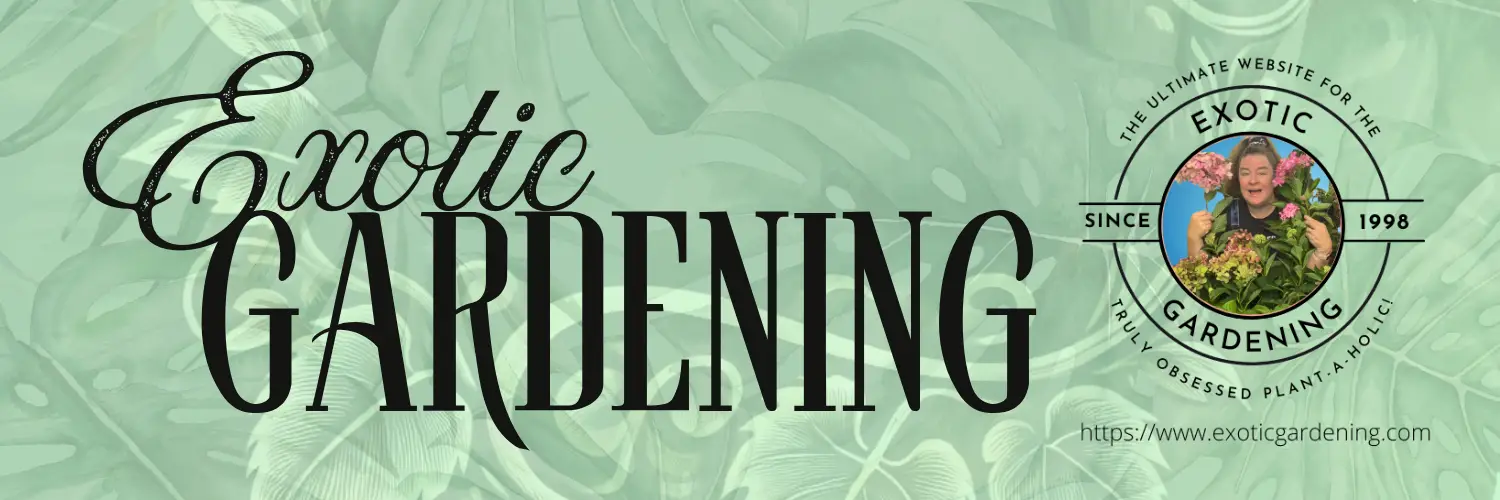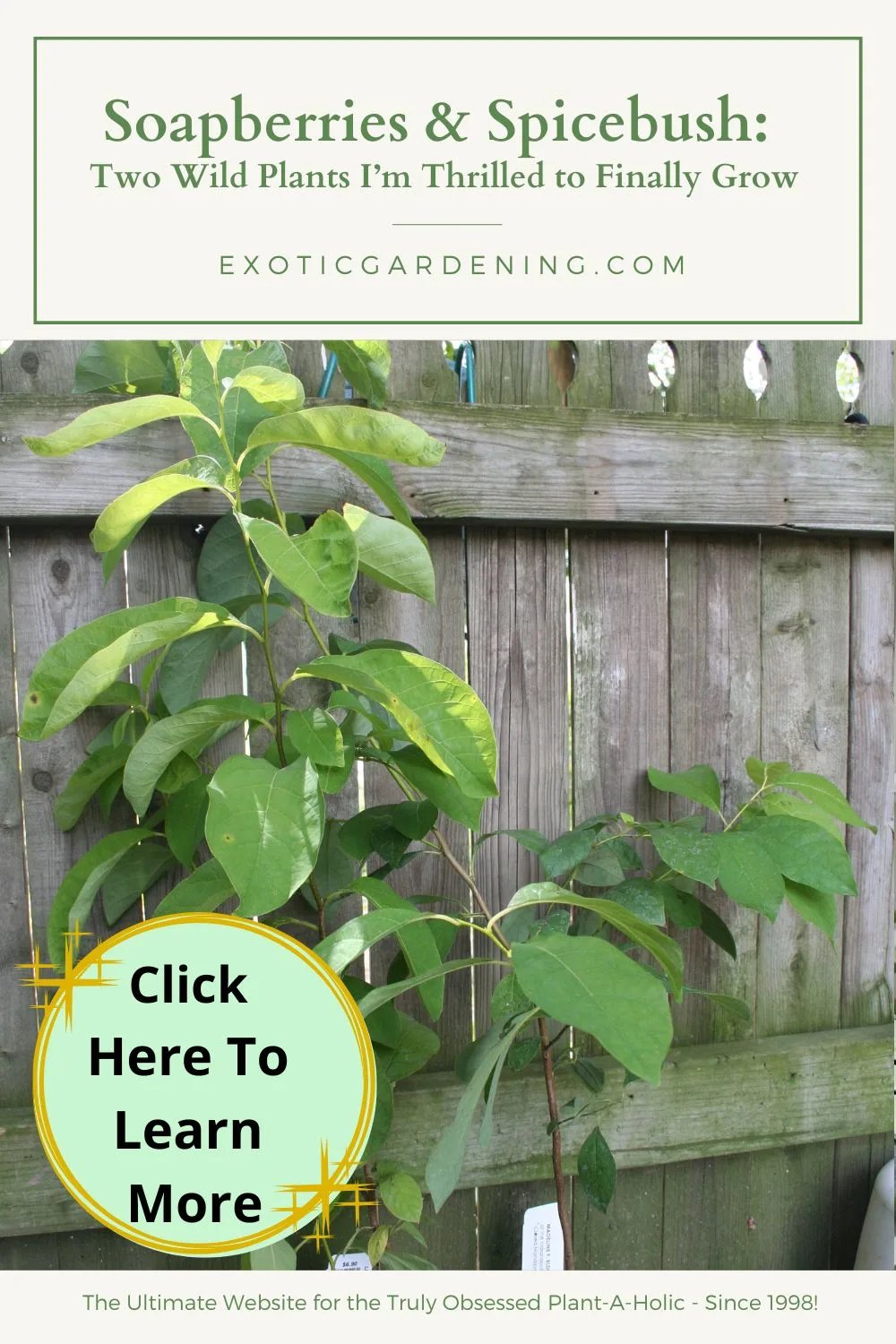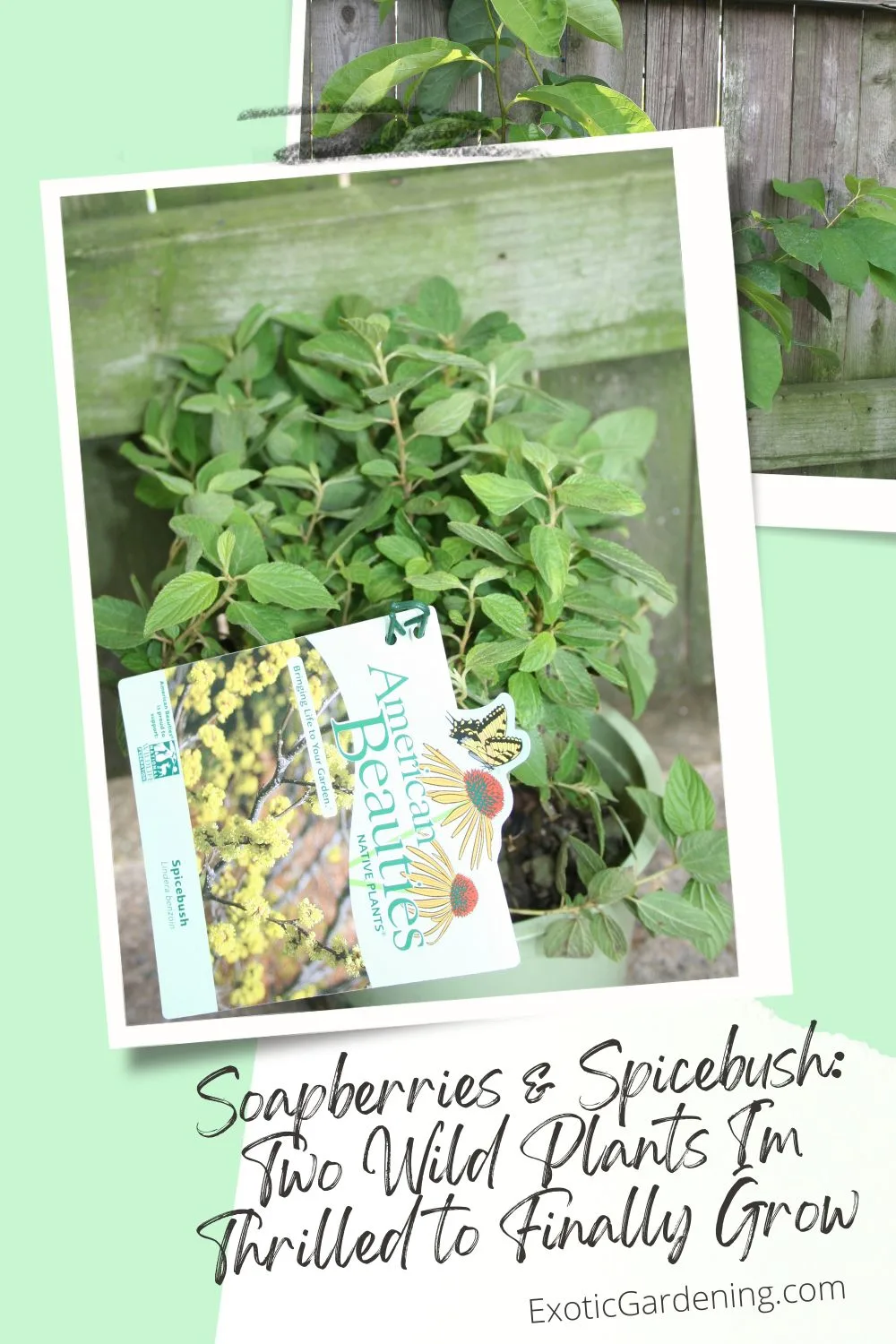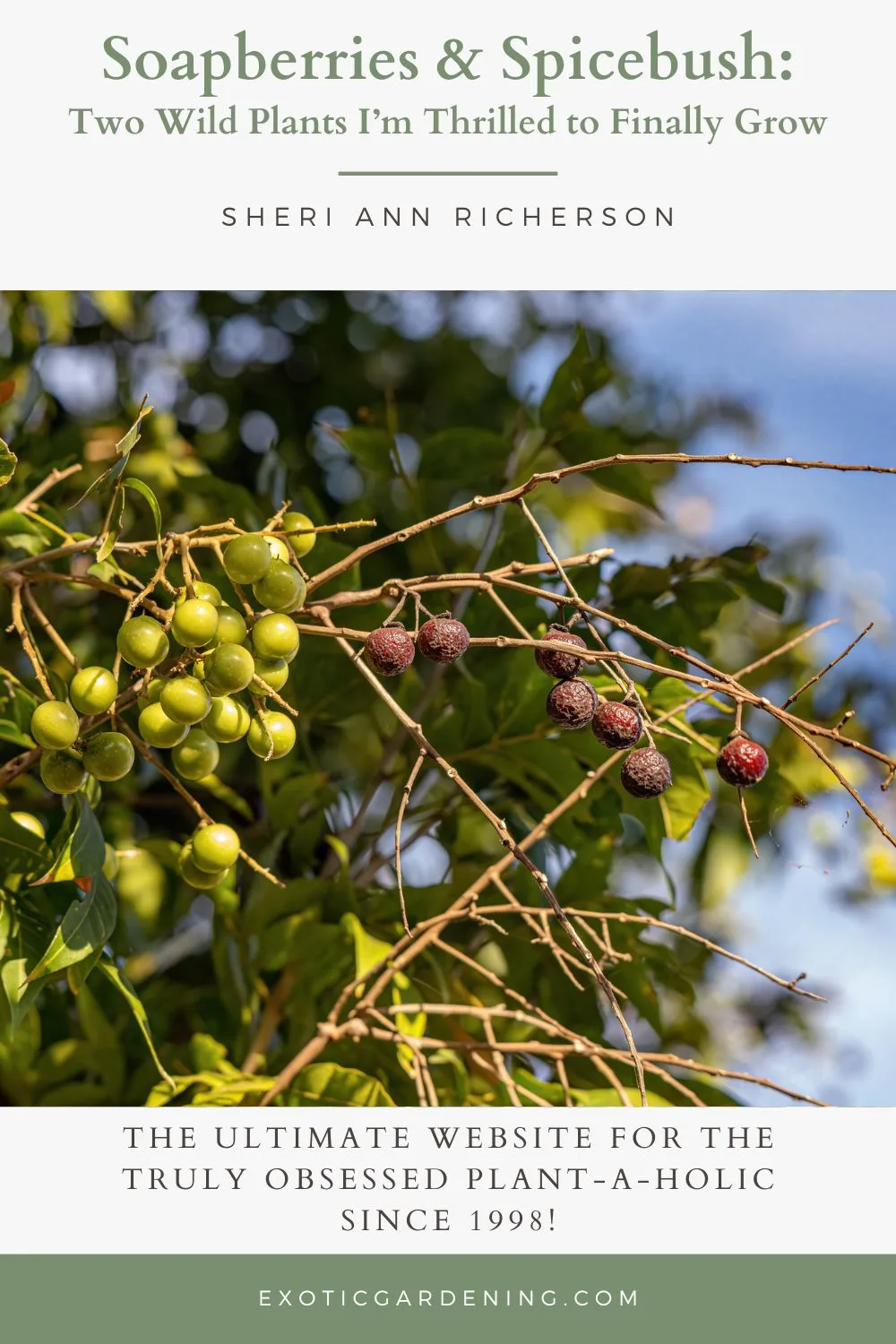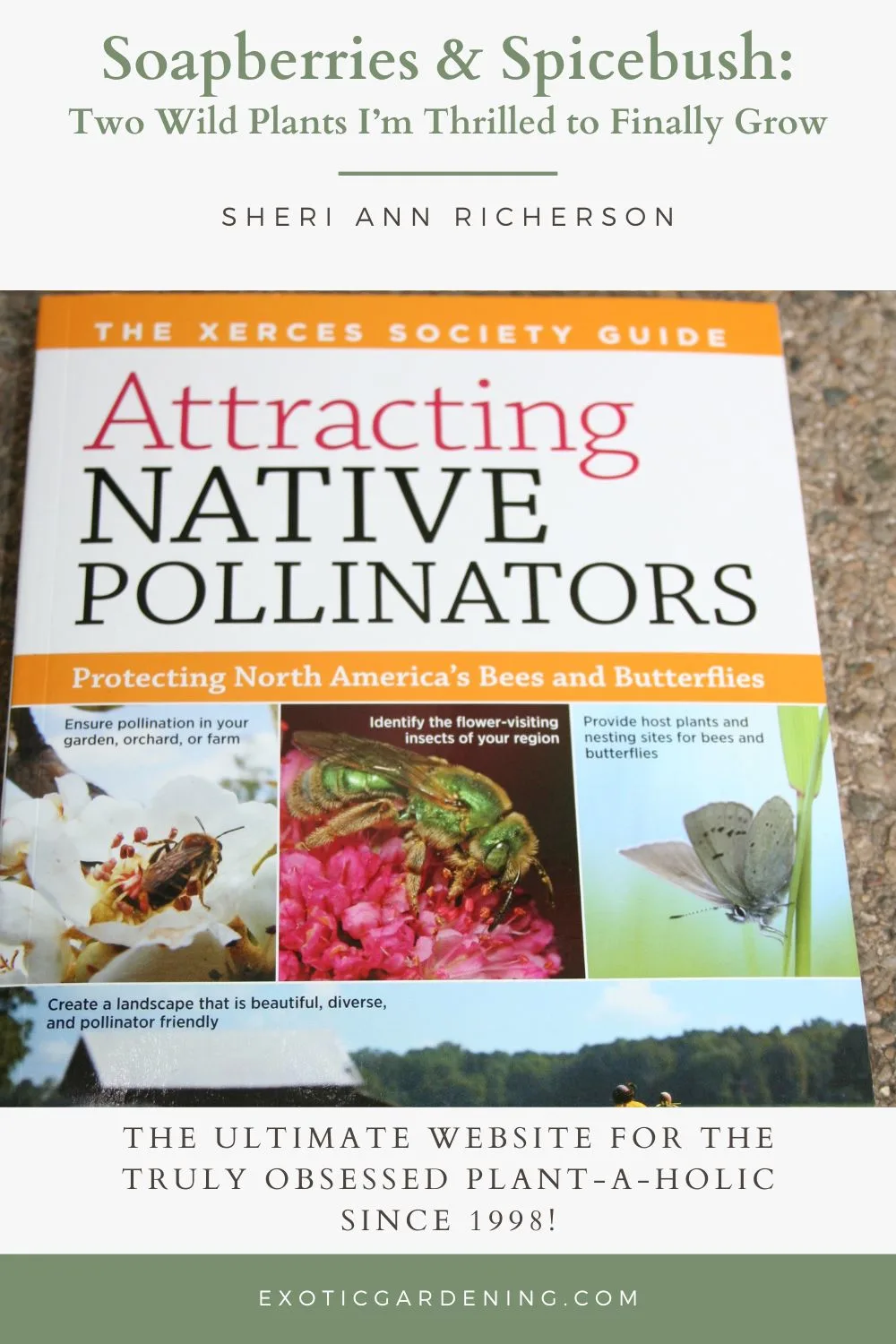Disclaimer: I did receive the Spicebush plants and the book for free in exchange for my honest review. All opinions are my own.
There’s something incredibly satisfying about finally planting a pair of long-wanted native plants—especially when they’re as fascinating and functional as Sapindus drummondii and Lindera benzoin.
I’ve had both on my garden wish list for years.
Sapindus drummondii, often called the Western soapberry, is a small tree known for its golden fruits that can be used as a natural soap.
Lindera benzoin, or spicebush, is a fragrant woodland shrub with berries and leaves that have a long history of culinary and medicinal use.
This week, I tucked two soapberry trees and three spicebush shrubs into freshly composted soil, and I can’t wait to see how they adapt.
They’re not just beautiful additions to the landscape—they’re deeply rooted in traditional knowledge, ecological value, and practical everyday use.
For an avid gardener like me, that’s the sweet spot: plants that look good, do good, and tell a story worth growing.
First, a Glance at the Plants
If you’re unfamiliar, Sapindus drummondii is commonly called Western soapberry.
It’s a deciduous tree native to the southern and central U.S., known for its golden, translucent fruit that contains natural saponins - plant-based soap!
Meanwhile, Lindera benzoin, or spicebush, is a native woodland shrub that not only supports wildlife but has long been valued for its culinary and herbal uses.
I ordered all five plants from Forest Farm, and I have to say, their condition on arrival was excellent.
Firm root systems, fresh growth, and not a wilted leaf in sight.
Unboxing them felt like opening a treasure chest—albeit one full of soil and roots.
The Magic of Soapberry Trees
I first learned about soapberries years ago while researching natural alternatives to commercial laundry detergent.
Imagine a tree that grows little golden fruits you can use to clean your clothes—no harsh chemicals, no plastic bottles.
Just toss a few dried fruits into a mesh bag and run your washing machine as usual.
That idea stuck with me, and I’ve been dreaming about planting a soapberry ever since.
Sapindus drummondii is hardy to around USDA Zone 6, and while it does grow best in warmer regions, I’m taking a bit of a chance with it here in my garden (Indiana).
With the right siting and winter protection, I’m hopeful it will adapt well—especially since we’re seeing slightly warmer winters lately.
It prefers full sun and well-drained soil, and once established, it’s known for being drought-tolerant and relatively pest-free.
Beyond their practical use, soapberry trees are just plain pretty.
They offer a light, airy canopy, glossy leaves, and eye-catching fruit that persists well into fall.
The fall foliage is often a rich yellow, adding seasonal interest even before the berries drop.
Spicebush: A Native Beauty with Culinary Roots
If I had to pick just one native shrub to recommend to every gardener, spicebush would be at the top of the list.
Lindera benzoin is one of those plants that quietly checks all the boxes:
✔️ Early spring blooms that provide pollen for native bees
✔️ Host plant for the stunning spicebush swallowtail butterfly
✔️ Fragrant leaves and stems
✔️ Berries that can be used as a culinary spice (fresh or dried)
✔️ Beautiful golden-yellow fall color
The scent of the crushed leaves and berries is somewhere between citrus and warm spice—it’s uplifting and earthy, like walking into a cozy kitchen on a chilly day.
Indigenous peoples and early settlers used the berries in cooking, often as a pepper or allspice substitute.
The twigs and bark can also be steeped for tea or simmered to infuse broths with subtle flavor.
In the garden, spicebush thrives in part shade to full sun and appreciates moist, rich soil.
Mine are going into a semi-shaded area near the edge of a tree line where I’ve been slowly converting turfgrass into a more naturalistic, layered woodland edge.
They’ll add structure, seasonal interest, and wildlife value all in one package.
Planting Day Reflections
The day the plants arrived, Jerry helped me dig the holes.
We amended the soil with compost from our bin, a rich, crumbly mix full of life, and carefully unwrapped the roots.
Each tree and shrub went in with care, and we watered everything deeply to settle them in.
There’s always something hopeful about planting perennials in late summer.
You know they’ll spend the rest of the season quietly establishing roots, preparing for next year’s growth.
It’s a bit of a gamble with the weather turning cooler, but if the timing is right, the reward is a plant that hits the ground running come spring.
Of course, I’ll be watching for frost and might mulch the root zones a bit heavier than usual this fall—just to give them an extra layer of protection.
A Garden That Works for You—and with Nature
One of the biggest joys of gardening, for me, is finding plants that do more than look pretty.
I love perennials, don’t get me wrong, but there’s something so gratifying about knowing a plant can also serve a greater purpose.
With Sapindus drummondii, I’m creating a natural source of household soap that reduces waste and chemical use.
With Lindera benzoin, I’m reconnecting with the landscape in a culinary and ecological way, growing a plant that belongs here and supports native species.
And beyond their utility, both of these plants tell stories.
Stories of indigenous wisdom, sustainable living, and the quiet power of choosing something a little off the beaten path.
Want to Grow Native Plants That Do More?
If you’ve ever wanted to bring more purpose to your landscape, without sacrificing beauty, these two plants are a great place to start.
Whether you’re into native gardening, edible landscaping, or just want something a bit different in your backyard, soapberries and spicebush are worth exploring.
Why Attracting Native Pollinators Belongs on Every Gardener’s Shelf
If you’re serious about supporting pollinators and building a garden that does more than just look good, Attracting Native Pollinators by The Xerces Society is an essential read.
This book has been one of my go-to resources for years.
It goes far beyond just listing bee-friendly plants—it dives deep into the ecology of pollinators, the importance of native species, and how gardeners like you and me can make a real difference with the choices we make.
What I love most is how practical and inspiring it is.
You’ll find regional pollinator guides, habitat layout ideas, plant charts, and beautiful photography that sparks your creativity while grounding it in science.
Whether you're starting your first native garden or expanding your habitat beds like I am, this book helps you think through the bigger picture.
It’s also a great companion if you’re growing plants like spicebush or soapberry—species that offer both ecological value and everyday usefulness.
